Consider a world where ancient mariners gracefully navigate the ocean waves, their behaviors shrouded in mystery and wonder. Picture the enchanting realm of Kemp’s Ridley Sea Turtles, that exhibit an exceptional trait known as “bales,” where groups of turtle’s bands together, forming close-knit alliances.
Picture a harmonious union, where they share the secrets of survival and navigate the vast oceans as a formidable collective. Beyond the bales, Kemp’s Ridley Sea Turtles embark on a mesmerizing odyssey through the vast oceanic expanse.
Their journey takes you to the heart of their aquatic world, where they exhibit a tapestry of behaviors. Witness them effortlessly glide through the currents, revealing an ancient wisdom and resilience that captivate the imagination.
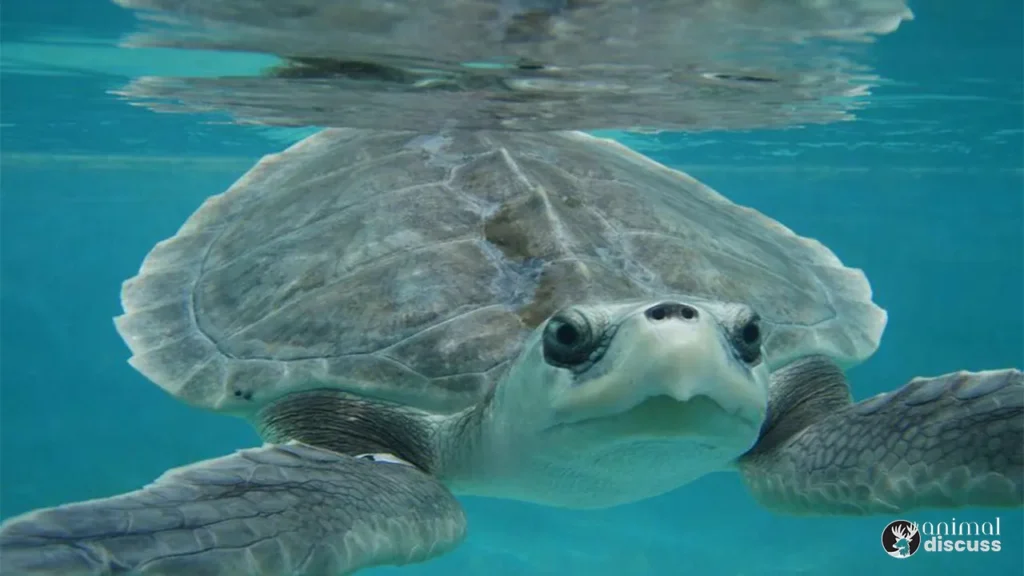
So, join us on this captivating journey, where every flip reveals a tale of precious balance of life in the world of Kemp’s Ridley Sea Turtles.
A short overview of different behavioral traits of Kemp’s Ridley Sea Turtle
Below is a short overview of the different behavioral traits of Kemp’s Ridley Sea Turtles presented in a chart:
| Behavioral Traits | Key Facts – Description |
|---|---|
| Growing Habits | Rapid growth in the first few years. Slower growth rate in adulthood. Reach sexual maturity at around 10-15 years. |
| Feeding Habits | Omnivorous diet, consuming crustaceans & algae. Opportunistic feeders, scavenging for food. Active foragers during daylight hours. |
| Breeding Habits | Engage in synchronized nesting arribadas. Nest on sandy beaches, returning to birthplace. Females lay multiple clutches in a season. |
| Migration Patterns | Migrate between feeding & nesting grounds. Long-distance migrations influenced by currents. |
| Ecological Adaptations | Well-adapted to various marine habitats. Excellent navigators using Earth’s magnetic field. Nesting behavior influenced by lunar cycles. |
| Aggression & Territorial Habits | Not highly aggressive, peaceful disposition. May exhibit territorial behavior during nesting. Congregate in bales for mutual protection. |
| Social Dynamics | Form strong bonds within bales. Solitary behavior outside nesting & bales. Limited social interactions in open ocean.8 |
Kemp’s Ridley Sea Turtles possess some fascinating behavioral traits that contribute to their survival in the vast marine environment. By understanding these key characteristics allows us to appreciate the unique adaptations and challenges they face in the ever-changing oceans.
Curious to know more about Kemp’s Ridley Sea Turtle? Read this article
Why do Kemp’s Ridley Sea Turtle behave significantly?
Think about the Kemp’s Ridley Sea Turtles, and the question then arises: Why do these magnificent creatures behave significantly? Let’s explore the behavioral patterns of them and uncover the reasons behind their actions:
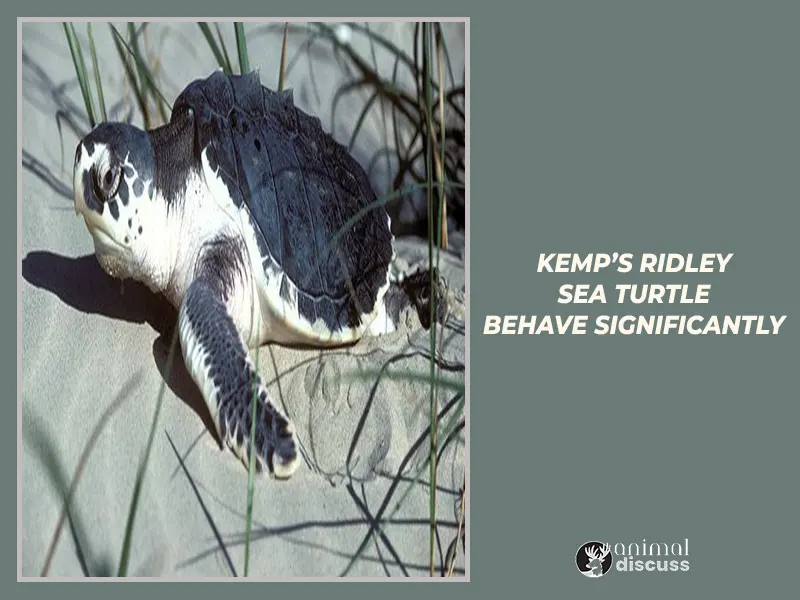
Finding Food:
Kemp’s Ridley turtles are opportunistic omnivores that eat a variety of foods. They are agile foragers who hunt coastal areas for food during the day. Their opportunistic feeding behavior shows their ability to exploit different food sources, ensuring their survival in changeable marine environments.
Adaptive Survival Strategies:
Kemp’s Ridley turtles use Earth’s magnetic field to find nesting and eating places. The ability to lay numerous egg clutches per season helps their species survive. These adaptations show their marine ecosystem importance and resilience.
Interactions with Marine Life:
Kemp’s Ridley turtles interact with different marine species in complex ways. They share with hitchhiker fish and crabs. In the marine ecosystem, predators like sharks and birds affect their behavior and movements, reflecting their complex survival strategies.
These remarkable behaviors are the testament to the adaptability and survival strategies that have allowed them to survive in the dynamic oceanic world.
Growing habits: Structural and physical adaptations
Ever wondered how Kemp’s Ridley Sea Turtles go through an astonishing transformation process from hatchlings to adults? Let’s find the remarkable growing patterns and their unique adaptability that support their growing journey.
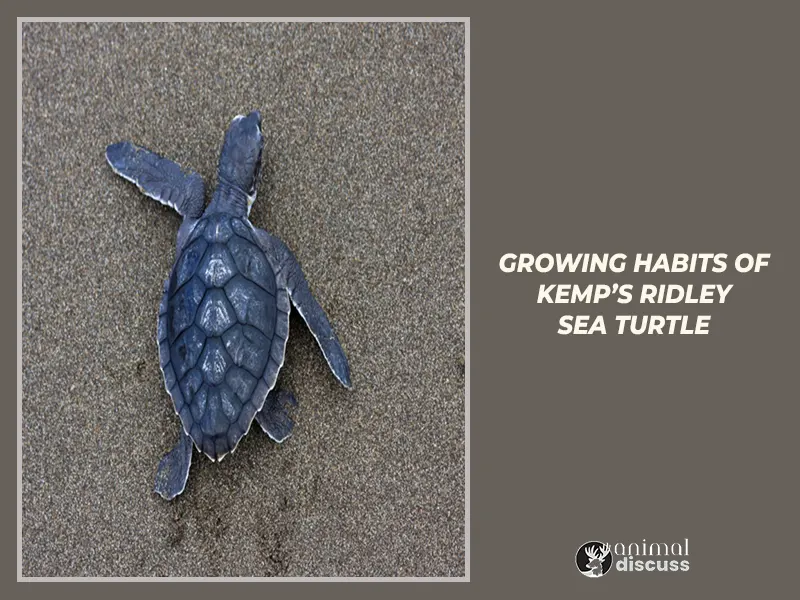
From the tiny, vulnerable hatchlings to resilient, ocean-traveling adults, these sea turtles hold some captivating secrets within the growth stages of their lives:
Physical Growth Structure:
Kemp’s Ridley Sea Turtles, which are little sea turtles, have varied morphological traits at different ages. They stand out as hatchlings with their black carapace and flippers. These adult turtles have a heart-shaped carapace and grow to 2–2.5 feet (60–75 cm). These distinctive features distinguish them and highlight the incredible diversity of sea turtles.
Newborn Babies:
Kemp’s Ridley Sea Turtle hatchlings weigh 0.5 ounces (15 g) and measure 1.5 to 2 inches (3.8 to 5 cm). Following hatching, these hatchlings risk their lives by traveling to the ocean. This crucial voyage starts their life cycle, demonstrating their strength and determination to overcome challenges.
7 Days to 14 Days:
Kemp’s Ridley Sea Turtle hatchlings need rest in their first week. They develop strong flippers for swimming in the huge ocean during this time
21 to 30 Days:
Kemp’s Ridley Sea Turtle hatchlings change after a few weeks. As they mature, their delicate carapaces darken and harden. They become more independent in the open ocean and learn to navigate intricate currents. They start eating jellyfish and tiny crustaceans during this vital time.
30 to 42 Days:
As they mature, Kemp’s Ridley Sea Turtles expand rapidly in size and strength. Their hunting and survival skills improve as they learn to dive and stay submerged. Despite their youth, these turtles travel tremendous distances across the ocean.
2 to 3 Months:
Kemp’s Ridley Sea Turtles grow to 8–10 inches (20–25 cm) during this time. Their juvenile carapace has a heart-shaped form, indicating maturation. These turtles begin exploring shallower coastal waters at this time.
In response to their changing surroundings, they eat more prey and diversify their diet. This transitory phase shows their versatility, allowing them to explore new environments and survive in marine surroundings.
4 to 6 Months:
Kemp’s Ridley Sea Turtles are more curious and exploratory at this phase. They migrate to shallower waters and seagrass beds to adapt to different maritime conditions.
Their food changes with the environment, including shrimp, crabs, and tiny fish. This change shows their versatility and resourcefulness, allowing them to explore different environments and food sources.
9 to 12 Months:
Kemp’s Ridley Sea Turtles develop to 12–14 inches (30–35 cm) in carapace around 10–12 months. As they reach sexual maturity, they enter adulthood.
Now, they can reproduce, these turtles help their species survive. Kemp’s Ridley Sea Turtles’ reproduction ensures their survival and emphasizes their role in marine ecosystems.
Growth Between 1-5 Years:
Kemp’s Ridley Sea Turtles grow to 20 inches (50 cm) over time. Their carapace and flippers mature, improving their physical ability. As they grow, these turtles improve their swimming and diving skills to navigate their varied surroundings.
Growth Between 5-10 Years:
Kemp’s Ridley Sea Turtles reach fully sexual maturity at this stage, a major reproductive milestone. Their carapace, or upper shell, grows and becomes longer as they mature. In addition, these turtles migrate large distances across the ocean during this period.
Adult Growth:
Kemp’s Ridley Sea Turtles grow to 24–30 inches (60–75 cm) and weigh 77–100 pounds (35–45 kg). They reach their peak physical shape, equipped to endure and thrive in various maritime habitats. They can navigate ocean currents, forage for food, and survive their ecosystem due to their size and power.
As they navigate the challenges of life in the oceans, Kemp’s Ridley Sea Turtles shows the mysteries of nature.
Physical differences among common species of Kemp’s Ridley Sea Turtle
Did you know about the Kemp’s Ridley Sea Turtles come in many species with their unique physical characteristics? Let’s get a deeper look at these astonishing animals and discover that how their traits vary among the different species.
| Species | Location | Size | Height | Weight | Top Speed |
|---|---|---|---|---|---|
| Leatherback Turtle | Global distribution | 6 to 7 feet | 4 feet | 550 to 2000 lbs | 22 to 25 mph |
| Hawksbill Turtle | Tropical waters | 2 to 3 feet | 2 feet | 100 to 200 lbs | 1.4 to 2.8 mph |
| Flatback Turtle | Australian waters | 3 to 3.5 feet | 2.5 feet | 176 to 220 lbs | 0.9 to 1.5 mph |
| Olive Ridley Turtle | Global distribution | 2 to 2.5 feet | 2 feet | 80 to 110 lbs | 15 to 22 mph |
Feeding habits of Kemp’s Ridley Sea Turtle
Feeding habits play a crucial role in the life of Kemp’s Ridley Sea Turtles, from their tiny hatchling days to adulthood.
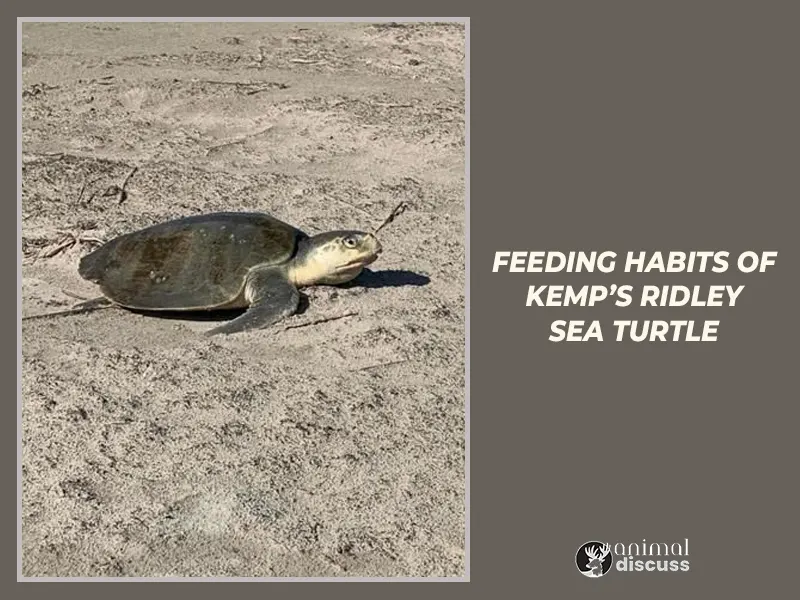
Let’s dive into the depths of their feeding behaviors, exploring how these incredible creatures find sustenance and thrive in their marine environments.
Feeding Habits of Kemp’s Ridley Sea Turtle Adults:
Adult Kemp’s Ridley Sea Turtles are opportunistic predators that eat a variety of foods which they catch with their powerful teeth when hunting on the ocean floor. These carnivorous turtles hunt crustaceans, tiny fish, and mollusks. They break shells and catch nimble prey with their muscular jaws.
The Kemp’s Ridley Sea Turtles occasionally filter feed on jellyfish and other soft-bodied invertebrates. Their inventiveness allows them to survive in many ecological niches by adapting their feeding methods to prey availability. Their versatility in feeding behavior shows their importance to marine environments.
Feeding Habits of Kemp’s Ridley Sea Turtle Cubs
Hatchling Early Kemp’s Ridley Sea Turtles are omnivore, eating plants and small marine invertebrates. Small turtles depend on nutrient-rich plankton drifting in ocean currents for nourishment during this time. Young turtles eat snails and crabs as they grow.
Kemp’s Ridley Sea Turtle juveniles become carnivorous as adults, focusing on fish and crabs.
Their dietary evolution shows their ability to adapt to their developmental phases and marine food resources.
These unique feeding habits of both adult and cub Kemp’s Ridley Sea Turtles exemplify their adaptability and resilience in navigating their underwater world. Their ability to thrive on a diverse diet ensures their survival and keeps them well-attuned to the ever-changing marine ecosystem.
Mating (Breeding) And Migration Patterns
Ever wondered how Kemp’s Ridley Sea Turtles navigate the complexities of mating and migration? Let’s dive into the fascinating world of their breeding patterns and oceanic odysseys:
Mating (Breeding) Patterns of Kemp’s Ridley Sea Turtles:
Kemp’s Ridley Sea Turtles travel far to find mates during breeding season. After bonding, a pair stays monogamous and breeds annually.
Females carefully choose nesting places, frequently sandy beaches, where they dig a burrow to safely lay their eggs. Kemp’s Ridley Sea Turtles’ nesting activity emphasizes their commitment to young survival.
Migration Patterns of Kemp’s Ridley Sea Turtles:
Kemp’s Ridley Sea Turtles are known for their precise migration patterns across enormous marine expanses. From Mexican breeding beaches to Gulf of Mexico hunting grounds, these turtles migrate dramatically. Water temperature and day length affect these migratory and breeding activities.
Their capacity to sense Earth’s magnetic fields and use this built-in compass to navigate their migration patterns is astounding. Turtles’ capacity to navigate large distances and survive in varied marine settings shows their versatility and survival techniques.
The mating and migration behaviors of Kemp’s Ridley Sea Turtles are awe-inspiring marvels of nature. From the intimate courtship rituals to the mass nesting events and the long-distance oceanic journeys, these turtles showcase the wonders of adaptation and instinct in their struggle for survival and perpetuation of their species.
Ecological Adaptation
Have you ever wondered how Kemp’s Ridley Sea Turtles manage to thrive in their oceanic world? What fascinating adaptations have they developed to conquer the challenges of their environment?
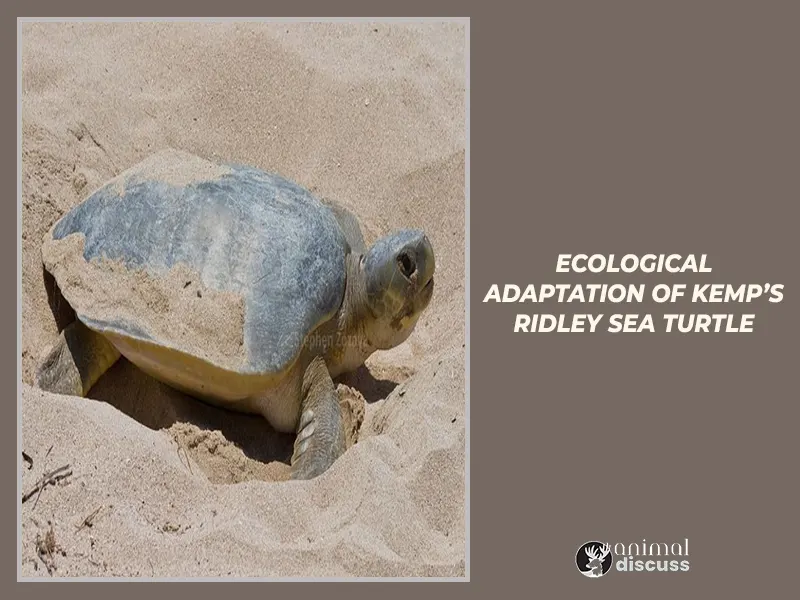
Let’s dive into the mesmerizing realm of Kemp’s Ridley’s ecological adaptations and uncover the secrets of their survival:
- How do their flipper designs help them navigate the vast oceans? Kemp’s Ridley Sea Turtles boast unique flipper adaptations that allow them to glide through the water with grace and agility. Their powerful flippers are meticulously shaped, enabling them to cover great distances during their migrations.
- What makes their streamlined shell a perfect fit for seamless swimming? The carapace, or shell, of Kemp’s Ridley Sea Turtles is relatively lightweight and streamlined, reducing drag as they move through the water. This sleek design is vital for their swift movements, enabling them to efficiently hunt for prey and evade potential threats.
- How do they cope with varying temperatures in their diverse habitats? The Kemp’s Ridley Sea Turtles have been evolved a remarkable capability to control the body temperature. They can also adjust their metabolism and habitat choice to cope with the different ranges of temperature, which make them highly adaptable to the ever-changing surroundings of them.
- How do their versatile feeding habits sustain them in various ecosystems? Kemp’s Ridley Sea Turtles have embraced an omnivorous diet, consuming both animal and plant matter. This flexibility allows them to exploit diverse food sources throughout their range, ensuring they can thrive in different environmental conditions.
- How do they navigate their epic migrations across vast distances? As migratory creatures, these turtles possess a remarkable sense of navigation. They utilize a combination of magnetic fields, sun angles, and ocean currents as their internal GPS to guide them on their impressive journeys.
Kemp’s Ridley Sea Turtle’s role in ecosystem
Have you ever wondered about the profound impact of Kemp’s Ridley Sea Turtles on their surrounding ecosystems? These fascinating creatures play an irreplaceable role in maintaining the delicate balance of marine life.
Let’s explore the crucial roles they fulfill and the ripple effects of their presence in the intricate web of the ecosystem:
- Guardians of Seagrass Meadows.
- Balancing Marine Populations.
- Nurturing the Coastal Landscape.
- Recycling Nutrients from the Deep.
- Protecting Fragile Habitats.
These eco-warriors are more than just graceful swimmers; they are essential players in maintaining the delicate balance of marine life.
Social Behavior of Kemp’s Ridley Sea Turtle
Do Kemp’s Ridley Sea Turtles show secrets of remarkable social behavior beneath the waves?
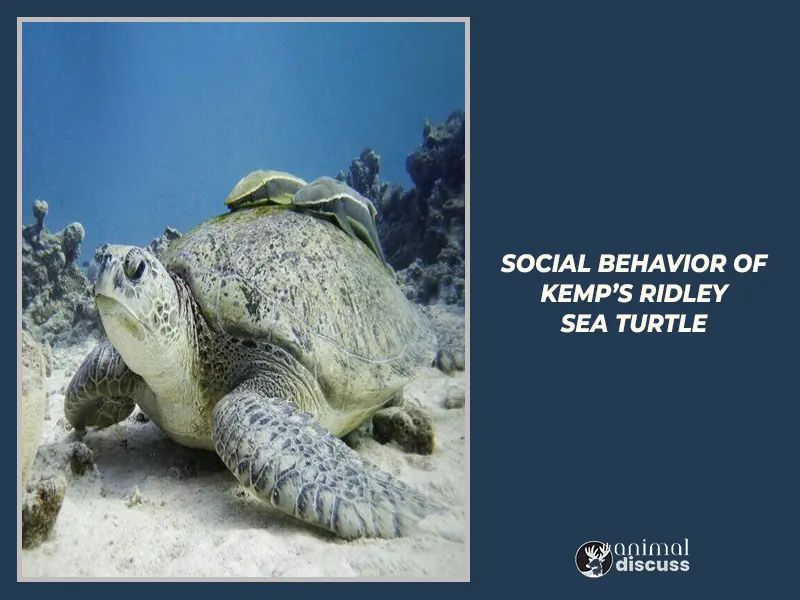
Let’s venture into their oceanic realm to uncover the mysteries of their unique interactions and the hidden significance behind their solitary wanderings:
01. Solitary Wanderers: At sea, Kemp’s Ridley Sea Turtles are known to be primarily solitary creatures. They embark on long journeys, navigating vast oceans and exploring diverse habitats all on their own. This solitary lifestyle allows them to adapt to various conditions and seek out ideal locations for feeding and nesting.
02. Synchronized Nesting: Within the nesting congregations, Kemp’s Ridley females demonstrate a striking synchronization in their egg-laying process. Scientists believe that this unique adaptation could be a way to overwhelm potential predators and increase the chances of the hatchlings surviving their critical journey to the sea.
03. Communal Feeding: While foraging for food, Kemp’s Ridley Sea Turtles may engage in communal feeding behavior. In areas abundant with food resources, several turtles might gather and feed together. This behavior may offer them protection against predators while ensuring they can access sufficient nourishment.
04. Cooperative Breeding: Kemp’s Ridley Sea Turtles exhibit a remarkable form of cooperative breeding. Hatchlings emerging from the nests may stay together in a group, known as a “creche,” for a short period. This cooperative behavior may provide them with enhanced safety and increase their chances of survival during the vulnerable early stages of life.
Aggression And Territorial Habits
Amidst the vast expanse of the ocean, where Kemp’s Ridley Sea Turtles roam, a tale of fierce determination and territorial prowess unfolds. These seemingly gentle creatures can exhibit surprising aggression when circumstances call for it.
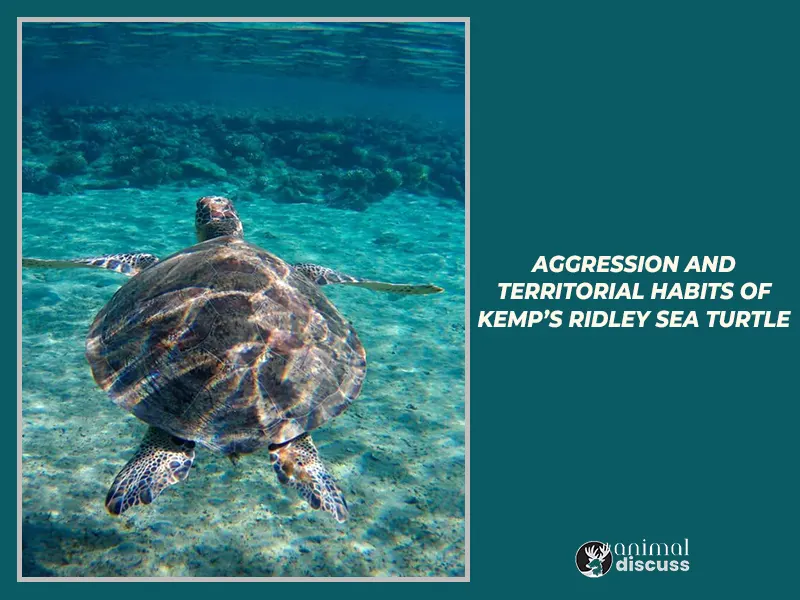
Their territorial habits are finely tuned, with intriguing behaviors guiding their interactions with both conspecifics and other marine inhabitants.
Aggression Among Kemp’s Ridley Sea Turtles:
Male Kemp’s Ridley Sea Turtles face strong competition for receptive females during mating season. Biting is used by dominant males to claim breeding territory. Competing females for sandy shore nesting places fight fiercely.
Kemp’s Ridley Sea Turtles compete for partners and nesting places during mating season, as shown by these territorial disputes and aggressive behaviors.
Territorial Habits of Kemp’s Ridley Sea Turtles:
Kemp’s Ridley Sea Turtle females zealously guard their sandy breeding places. Individuals also form feeding zones to ensure abundant food sources and fight off invaders. Turtles need this territorial tendency to get good breeding places and lots of food.
Kemp’s Ridley Sea Turtles’ territorial behavior helps them reproduce and survive, demonstrating the importance of territorial behavior in marine environments.
The interplay of aggression and territoriality reveals a world where survival and the continuation of their species rest on the ability to assert dominance and secure their place in this mesmerizing underwater society.
Facts that influence different Behavioral Traits
What mysterious forces drive the diverse behavioral traits of Kemp’s Ridley Sea Turtles? Let’s unravel the intriguing facts that shape their fascinating behaviors:
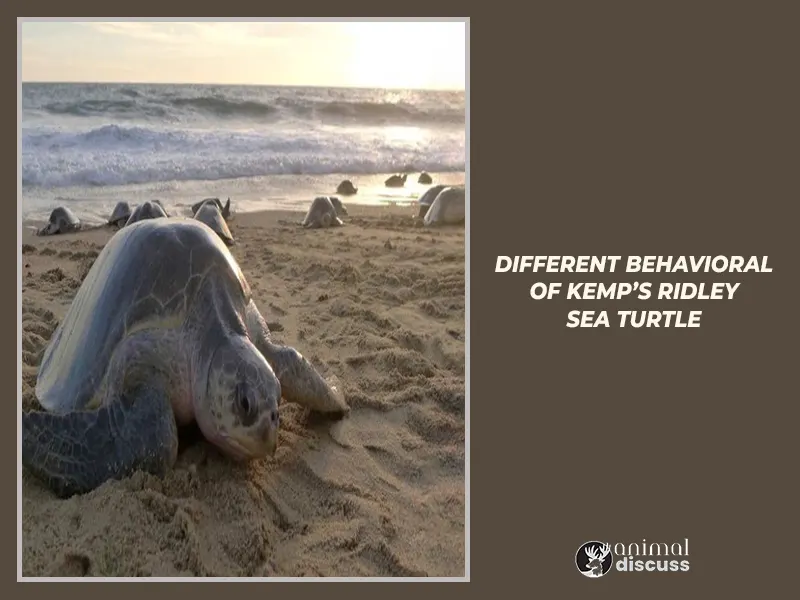
- 01. Genetic Factors: Kemp’s Ridley Sea Turtles inherit certain behavioral traits from their parents through genetics. These traits can influence their social dynamics, migration patterns, and feeding habits.
- 02. Foraging Techniques: These agile turtles have honed their foraging skills to perfection. With a preference for shallow waters, they use their strong jaws to feast on various marine invertebrates, mollusks, and crustaceans.
- 03. Social Communes: Kemp’s Ridley Sea Turtles showcase social behavior unique among sea turtles. They sometimes gather in large groups during nesting events, creating an astonishing sight that captivates onlookers.
- 04. Reproductive Cycle: Breeding habits and nesting behavior are significantly influenced by the reproductive cycle of female turtles. The timing and frequency of nesting are essential for the survival of the species.
- 05. Instinctual Navigation: Kemp’s Ridley Sea Turtles possess an inherent ability to navigate vast ocean distances. Their unique instincts guide them during migration, allowing them to return to the exact beaches where they hatched, called “arribada,” to lay their eggs.
Human Induced Facts That Change Kemp’s Ridley Sea Turtle’s Behavior
What hidden forces shape the behavioral destiny of Kemp’s Ridley Sea Turtles in the face of human-induced influences? Let’s venture into the enigmatic realm of their interactions with human activities and how they adapt to a changing world:
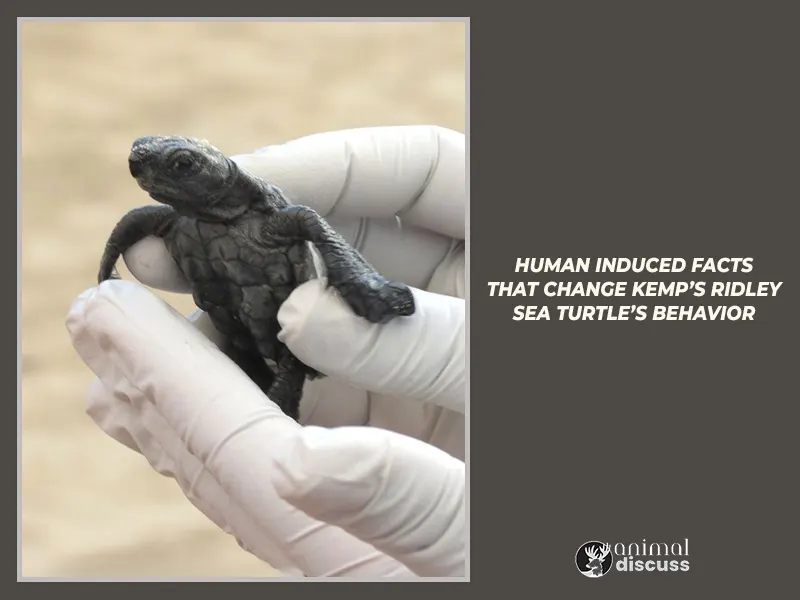
Light Pollution Dilemma:
The allure of coastal lights can lead hatchlings astray as they emerge from their nests. Disoriented by artificial lighting, they may head towards roads or urban areas instead of the natural guiding light of the moon reflecting on the ocean.
Marine Debris Disturbance:
Kemp’s Ridley Sea Turtles encounter human-made debris such as plastic bags and discarded fishing gear in their oceanic journey. Entanglement in such debris can hinder their movements, disrupt feeding behaviors, and even prove fatal.
Nesting Site Disruptions:
As human activities encroach on nesting beaches, Kemp’s Ridley Sea Turtles may face disturbances during their crucial egg-laying period. Construction, tourism, and coastal development can displace or stress nesting females, leading to reduced nesting success.
Climate Change Challenges:
Rising sea temperatures and changing ocean currents impact the habitats of Kemp’s Ridley Sea Turtles. Alterations in their food availability and nesting sites pose significant challenges, potentially affecting their overall population dynamics.
How to conserve Kemp’s Ridley Sea Turtles Behavior?
Preserving the enchanting behavior of Kemp’s Ridley Sea Turtles is not just a responsibility but a privilege. Let’s embark on a journey of conservation, where every individual can contribute to safeguarding these magnificent creatures:
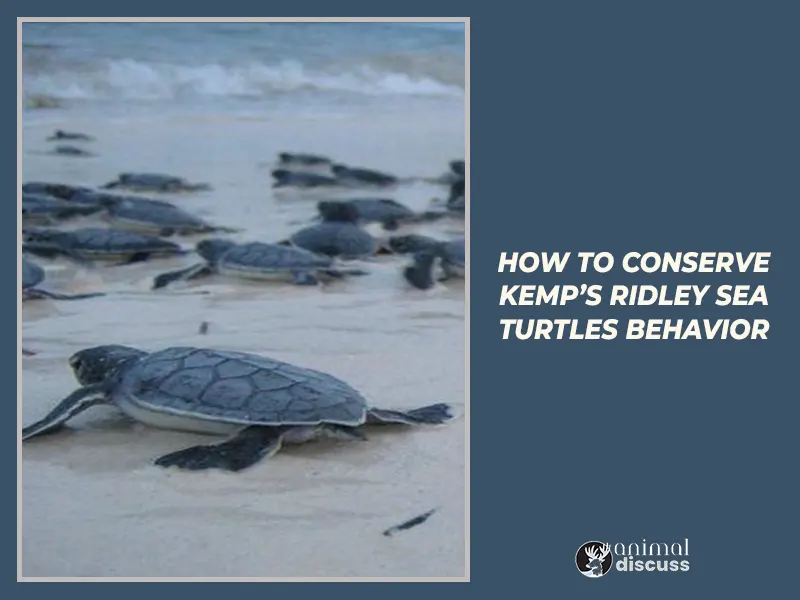
Nesting Ground Protection:
Protected nesting grounds are needed to protect Kemp’s Ridley Sea Turtle females and their eggs. Conservationists need monitoring programs to track nests and evaluate conservation efforts. Combining these techniques can safeguard breeding females and nesting places, helping conserve these endangered turtles.
Reducing Marine Debris:
Beach clean-ups must remove marine trash to protect Kemp’s Ridley Sea Turtles and their hatchlings. Clearing nesting beaches of dangerous objects improves hatchlings’ chances of reaching the ocean. Also important are efforts to limit single-use plastics and promote appropriate garbage disposal.
Fishing Industry Collaboration:
Sustainable fishing is essential to Kemp’s Ridley Sea Turtle conservation. Minimizing bycatch and protecting sea turtle habitats protects these amazing creatures. Development of coexistence techniques requires collaboration with fishermen and fishery management.
Together, we can write a story of coexistence, love, and reverence for these awe-inspiring creatures, securing their place in the heart of our planet’s vibrant ecosystems.
Several organizations are dedicated to the conservation and protection of Kemp’s Ridley Sea Turtles. Some notable organizations include:
- The Kemp’s Ridley Sea Turtle Recovery Program: Managed by the U.S. Fish and Wildlife Service, this program is entirely dedicated to the conservation and recovery of the Kemp’s Ridley Sea Turtle population.
- Friends of the Ridley: This non-profit organization is solely committed to the protection and conservation of Kemp’s Ridley Sea Turtles. They work on various initiatives to raise awareness, conduct research, and implement conservation measures.
- The Ridley Turtle Project: This organization focuses exclusively on the conservation of Kemp’s Ridley Sea Turtles and their nesting beaches. They work with various research programs to ensure the long-term sustainability of this endangered animals.
Final Thoughts
In the vast expanse of the ocean, Kemp’s Ridley Sea Turtles stand as guardians of the deep, enthralling us with their fascinating behavioral traits. From their synchronized nesting spectacles to their resilience in the face of human-induced challenges, these remarkable creatures exemplify nature’s brilliance.
As we delve into the intricacies of their lives, we realize the significance of understanding and conserving their behavior. By joining forces with organizations devoted to their protection, we become custodians of this precious species.
Let us celebrate the enigma of Kemp’s Ridley Sea Turtles and work tirelessly to preserve their legacy for generations to come.
References
- https://www.fisheries.noaa.gov/species/kemps-ridley-sea-turtle
- https://en.wikipedia.org/wiki/Kemp%27s_ridley_sea_turtle
- https://conserveturtles.org/information-sea-turtles-kemps-ridley-sea-turtle/
- https://www.worldwildlife.org/species/kemp-s-ridley-turtle
- https://www.nationalgeographic.com/animals/reptiles/k/kemps-ridley-sea-turtle/
- https://oceanconservancy.org/wildlife-habitats/kemps-ridley-sea-turtle/
- https://www.iucnredlist.org/species/6494/43524814

